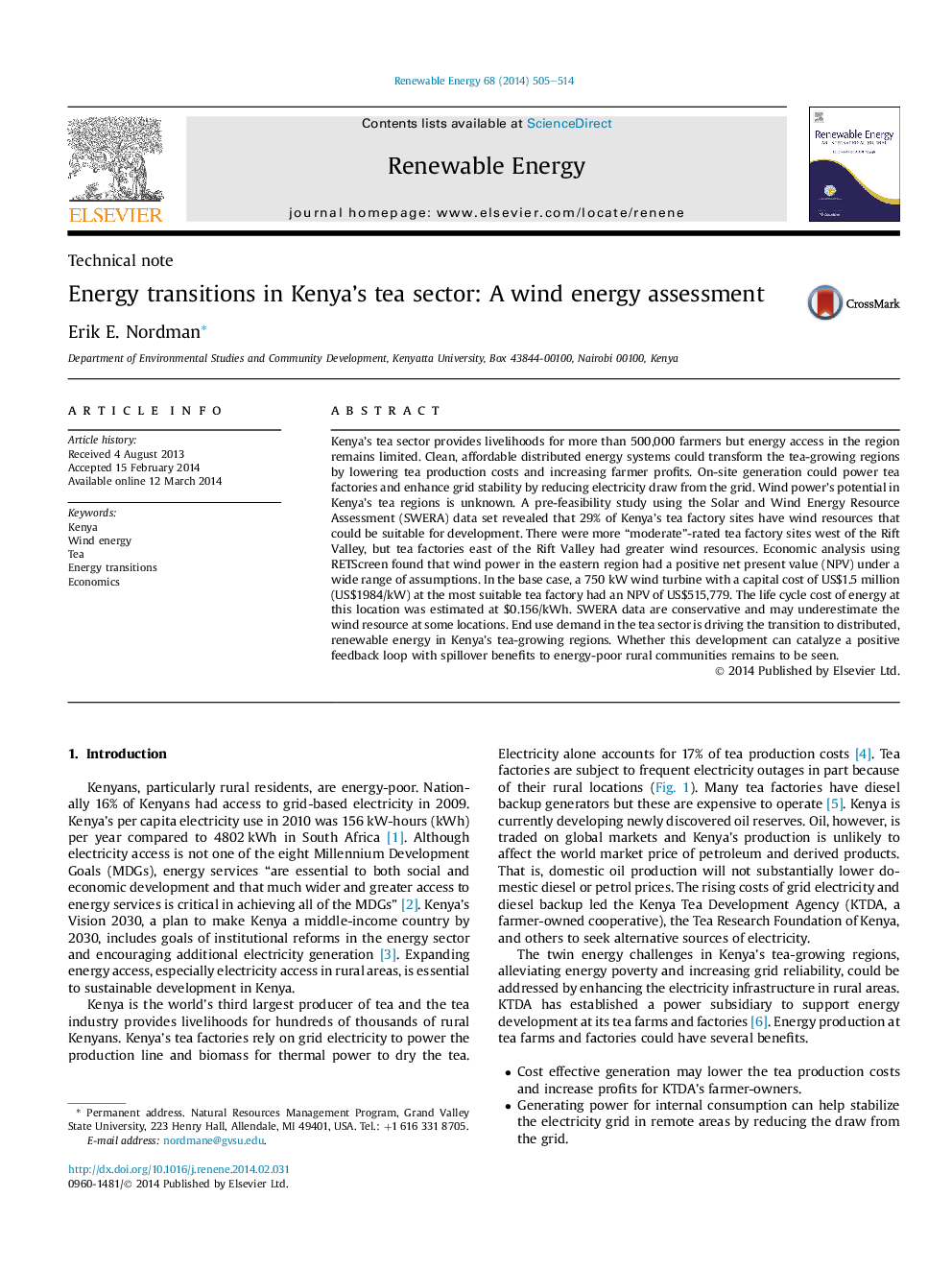| کد مقاله | کد نشریه | سال انتشار | مقاله انگلیسی | نسخه تمام متن |
|---|---|---|---|---|
| 300157 | 512470 | 2014 | 10 صفحه PDF | دانلود رایگان |
• 30% of tea factories have “moderate” or better wind resources based on Solar and Wind Energy Resource Assessment data.
• A hypothetical 750 kW turbine in a prime wind area had a US$1.5 million estimated capital cost and a US$515,779 NPV.
• The hypothetical project’s life cycle cost of energy was US0.156/kWh – less than the price of grid based electricity.
• In the best wind areas, wind turbines could be an economically viable alternative to grid power for Kenya's tea factories.
Kenya's tea sector provides livelihoods for more than 500,000 farmers but energy access in the region remains limited. Clean, affordable distributed energy systems could transform the tea-growing regions by lowering tea production costs and increasing farmer profits. On-site generation could power tea factories and enhance grid stability by reducing electricity draw from the grid. Wind power's potential in Kenya's tea regions is unknown. A pre-feasibility study using the Solar and Wind Energy Resource Assessment (SWERA) data set revealed that 29% of Kenya's tea factory sites have wind resources that could be suitable for development. There were more “moderate”-rated tea factory sites west of the Rift Valley, but tea factories east of the Rift Valley had greater wind resources. Economic analysis using RETScreen found that wind power in the eastern region had a positive net present value (NPV) under a wide range of assumptions. In the base case, a 750 kW wind turbine with a capital cost of US$1.5 million (US$1984/kW) at the most suitable tea factory had an NPV of US$515,779. The life cycle cost of energy at this location was estimated at $0.156/kWh. SWERA data are conservative and may underestimate the wind resource at some locations. End use demand in the tea sector is driving the transition to distributed, renewable energy in Kenya's tea-growing regions. Whether this development can catalyze a positive feedback loop with spillover benefits to energy-poor rural communities remains to be seen.
Journal: Renewable Energy - Volume 68, August 2014, Pages 505–514
